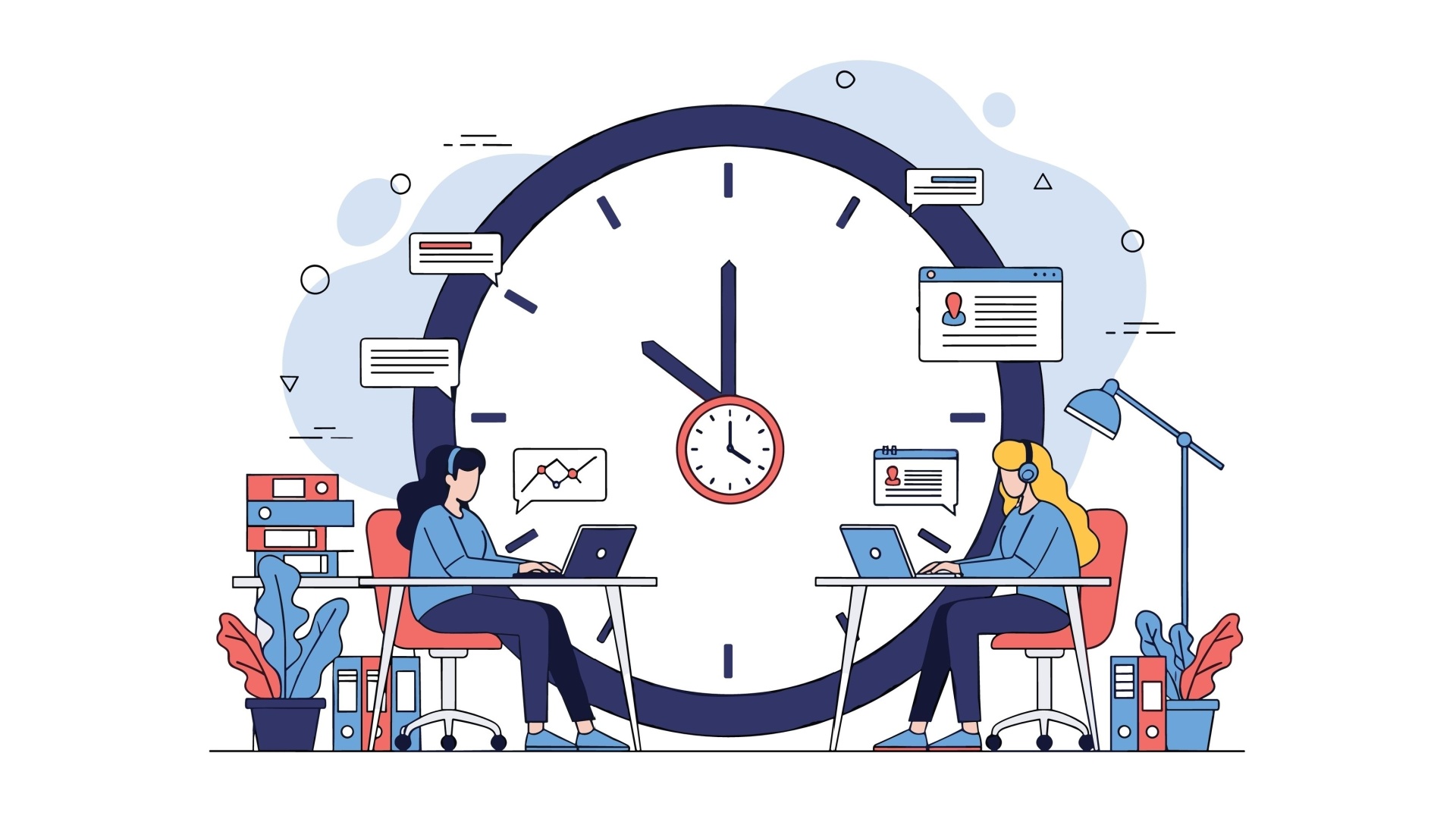Kick off the New Year free from procrastination: The most effective ways to outsmart your mind and start taking action!
How often do you postpone important tasks, hoping “later” will never arrive? Perhaps you fret about your ability to manage the task or cannot summon the motivation to begin. We’ve all experienced these feelings, and likely more than once. Some might term it apathy or mere laziness. In truth, these are clear signs of procrastination, which can lead to other concerning psychological results.
Having faced procrastination countless times, I’ve developed strategies to overcome it and regain control. In this article, I want to share these techniques with you!
How procrastination manifests

The term “procrastination” is quite revealing because in Latin, “pro” means “instead of,” and “crastinate” refers to “tomorrow.” Therefore, procrastination represents the persistent urge to defer tasks until later. This tendency to tackle issues at the last moment or to avoid them altogether is a form of self-destructive behavior, leading to numerous negative consequences. Prolonged procrastination can result in stress, which may cause emotional burnout, guilt, low self-esteem, and a decline in productivity, including satisfaction with one’s work. Research conducted by scientists and personal experience indicates that procrastinators often know their inactivity and its potential repercussions yet feel powerless to alter their behavior.
Understanding the underlying causes of this behavior, where the true enigma of procrastination resides, is significantly more challenging. Procrastination does not appear out of thin air; it is always a consequence of mental and emotional lapses, accumulated psychological issues, and subconscious traps. The factors contributing to the tendency to procrastinate include:
- Destructive perfectionism. Which serves as a defense mechanism for many of us, a way to gain control over our lives and align them with social standards. However, this obsessive pursuit of perfection can negatively affect all areas of activity, often leading to procrastination. When fixated on achieving an ideal outcome, one forgets that perfection is unattainable. This can trigger a fear of imperfection, resulting in a reluctance to confront dilemmas or complete tasks. Consequently, excessive perfectionism breeds destructive thoughts and extinguishes the motivation to take action.
- Fear of failure. It’s natural to fear failure, but the key is not to allow this fear to dominate you. The fear of making mistakes often results in avoiding tasks that appear too challenging or impossible to accomplish.
- Fear of success. The flip side of the coin is the subconscious fear not of making mistakes and failing but of standing out and achieving success. This fear scatters your attention and energy on trivial tasks, delaying genuinely essential and worthwhile projects to avoid success and unwanted attention.
- Incorrect prioritization. This occurs when tasks are not allocated based on their importance and value. Proper prioritization enables you to utilize your time effectively, concentrating on engaging and meaningful activities. Procrastination often emerges when there is a disconnect between the individual and the task.
Therefore, despite the numerous causes of procrastination, it often acts as a psychological defense mechanism against external threats. Furthermore, procrastination can arise from simple fatigue. In these instances, the body communicates to its owner that it lacks the energy and resources to engage in a particular activity. An increasing tendency to delay tasks frequently suggests that certain mental and physical practices have been disrupted.
Internal factors do not solely drive procrastination; external factors also play a significant role. Information overload, for instance, is a pressing issue today, worsened by the digitalization of various industries. This abundance of available information makes it challenging to find reliable sources, make informed decisions, and maintain focus. As a result, concentration decreases, the ‘wandering mind’ syndrome develops, fatigue increases, and the tendency to procrastinate grows.
Consequently, the factors provoking procrastination are ever-present. Unsurprisingly, around 25% of Americans consider themselves chronic procrastinators. Just think of how many people globally grapple with this issue! Despite its prevalence, procrastination is a challenge we must confront and overcome.
Overcoming procrastination: practical tips from Mila Semeshkina

Psychologists often emphasize that recognizing the existence of a problem is the vital first step towards resolving it and with good reason. Therefore, to begin with:
- Admit that you procrastinate
Please recognize that we all tend to delay tasks to varying degrees. Procrastination is not merely a sign of laziness or whim but a physically and psychologically driven reluctance to begin work, even on tasks we enjoy. However, procrastination can affect your emotional well-being, physical health, personal life, relationships, financial situation, and career prospects when procrastination becomes habitual. Therefore, it is essential to identify when you are slipping into procrastination and address it promptly. To remain vigilant, I closely monitor the following issues:
- Degree of enthusiasm for completing daily tasks.
- Following your priorities
- Aimlessly browsing the Internet and engaging in other distractions while working.
- Waiting for a moment of inspiration or a unique mindset.
If you notice a drop in motivation, a shift in your activity priorities, or any related symptoms, consider it a wake-up call to tackle procrastination. In the initial phase of acknowledging your situation, it’s essential to pinpoint the underlying cause of your procrastination. Be truthful with yourself by reflecting on the following questions:
- “Do I enjoy what I do?”
- “Am I keen on solving this problem?”
- “What will I gain from this? What advantages will it offer me?”
- “Do I genuinely want to succeed in this? Why does it matter?”
- “What will happen if I fail?” and so forth.
The questions you pose to yourself will differ based on the area of activity where you’ve observed procrastination and the duration for which it has been a concern. The crucial step is to unveil what encourages it. Be mindful of your self-talk. Researchers have pinpointed several common excuses for postponing tasks, including:
- “I’m not certain about what needs to be done.”
- “I am unsure how to do it.”
- “I do not wish to do anything.”
- “I’m not feeling up to it.”
- “I believe I can postpone this task; it won’t require much time.”
- “I believe I can finish it before the deadline.”
- “I’ll defer this task for now to attend to something else.”
- “I am awaiting a more suitable moment to commence work.”
Avoid such language when addressing the earlier questions and probe deeper into your state of mind. It takes considerable courage to be honest with yourself and face your fears. For example, you might find that your hesitation to tackle the task arises from a fear of making mistakes, appearing unqualified, or disappointing your boss.
- Set priorities
I strongly believe that if procrastination becomes a regular struggle, it’s essential to reevaluate your life goals and priorities. Start by pinpointing the aspects of your life that are most significant for you. By doing this, you can focus on what counts. These priorities encompass pursuing further education and acquiring new skills, advancing your career, investing in personal development, or supporting your family.
Next, reflect on what you are striving for and what helps you progress toward your dreams. Organize your goals by area of activity and importance and by their implementation deadlines. Immediate goals are typically short-term and intended to be achieved within a week or a month. Medium-term goals aim to be accomplished within a year, while long-term goals are planned for five years or more.
Creating a prioritization table can be very effective. Here’s an example of how it might look:
|
Area |
Duration |
||
|---|---|---|---|
|
Short term |
Midterm |
Long term |
|
|
Career |
Complete the partnership project next week |
Get promoted to Deputy (within the next year) |
Become Head of Department (in 2-3 years) |
|
Self-development |
Attend this week’s social media webinar |
Start a YouTube blog and gain 5,000 subscribers in three months |
Earn the YouTube Silver Play Button next year |
Clarifying your direction and the tasks needed to achieve your goals will help you overcome procrastination and significantly enhance your motivation.
- Utilize goal-setting strategies
Occasionally, procrastination arises from a lack of commitment to reaching a goal. To guarantee success, it is vital to employ practical goal-setting approaches that deliberately define goals and plan for their achievement. Some of the most effective strategies include:
The Life balance wheel. This method allows you to evaluate the key areas of your life to identify which goals to pursue now and which ones can wait for the near future. It’s especially beneficial for individuals struggling to juggle work and personal commitments. The life balance wheel is a circular diagram divided into eight segments, with each segment reflecting a different aspect of life (for example, “Work,” “Family,” “Hobbies and Entertainment,” “Self-development and Personal Growth,” “Health and Sports”). This wheel is tailored to everyone. You then examine your contentment in every area on a scale from 1 (poor) to 10 (excellent) and shade in the respective sections. The objective is to fill the wheel by setting and achieving goals in areas with lower satisfaction ratings.
The SMART technique. Creating a SMART goal can help you define your objectives clearly. A SMART goal should be:
S (Specific): Be specific about your goal. Instead of saying, “I want to get rich,” say, “I want to increase my monthly income,” or “I want to find a source of passive income.
M (Measurable): Ensure the goal is measurable with qualitative or quantitative indicators. For example, “I want to increase my monthly income by 50%.”
A (Achievable): Set a goal that is realistic and attainable. For instance, “I want to increase my monthly income by taking on additional duties and expanding my range of tasks.”
R (Relevant): Ensure the goal is relevant and important to your current situation. For example, “I want to increase my monthly income to provide for my family and save for a vacation abroad.”
T(Time-bound): Set a deadline for achieving the goal. For instance, “I want to increase my monthly income by December 31, 2025.”
Therefore, your objective should be specific and actionable. “By early next year, I aim to boost my monthly income by accepting extra responsibilities and broadening my task range since I need to support my family and save for a trip abroad.” This method makes the goal significantly more attainable than the ambiguous “I want to get rich.”
The Goal Tree. This method involves developing a detailed, step-by-step action plan. You can effectively achieve your overall goal by breaking it down into smaller, manageable tasks and organizing them hierarchically. You will achieve your aim faster and easier if you are more detailed about your primary goal. While extensive plans can appear overwhelming, gradual, step-by-step actions make the journey to your goal much more achievable.
- Allocate the workload and your resources appropriately
It is equally important to manage your energy and resources effectively. Athletes excel in this regard, as victory often favors those who pace themselves and conserve energy for the final push rather than those who start the fastest. Consider this a lesson: don’t attempt to achieve everything in a single day. Instead, act methodically and intentionally, distributing your workload and energy evenly.
To achieve this, I learned to organize tasks systematically. The goal tree method mentioned earlier is particularly effective. Once you identify the most urgent tasks that cannot be postponed, break them down into several stages. For example, if you need to develop a long-term brand development strategy or something else, write a term paper, or compile a quarterly report, divide the task into smaller, manageable parts and complete them sequentially. This approach prevents the work from feeling overwhelming or labor-intensive, allowing you to finish more quickly without compromising quality. It is crucial to plan and set deadlines for each mini-task.
- Stop multitasking
Multitasking means attempting to handle multiple tasks simultaneously or switching between them rapidly. Some individuals believe that multitasking can enhance productivity. However, the more tasks you attempt to juggle at once, the lower the quality of your work tends to be. Furthermore, multitasking results in quicker fatigue, heightened stress, apathy, and a tendency towards chronic procrastination rather than achieving your desired outcomes, such as a holiday or bonus. That is why I view multitasking as a significant barrier to success. While it may benefit routine tasks, it proves ineffective for work and professional responsibilities. Focus on completing one task at a time rather than jumping from one to another to maintain concentration and conserve energy.
- Master the art of saying “no” and eliminate what’s unnecessary
As we’ve discovered, one reason for procrastination can be a subconscious conflict with the task. This often happens when a manager assigns subordinates tasks that seem like bureaucratic red tape or complete nonsense.
Likewise, a tendency to procrastinate and persistently postpone tasks may indicate that you are overloaded with responsibilities, some of which may be unnecessary. Reflect on what you can remove to conquer procrastination and enhance productivity.
- Forgive yourself
And here we are, back to where we started: we are not robots or superhumans. We make mistakes and sometimes feel lazy, apathetic, and unwilling to do anything. Don’t blame yourself for this! If accumulated fatigue prevents you from working effectively, take a few days off. If burnout is on the horizon, don’t ignore the need for a holiday. Forget about all your responsibilities for at least a week—it will only do you good. Imagine how rested and rejuvenated you’ll feel when you return to your usual activities, remembering your love for your work and how much you missed it. Therefore, to overcome procrastination, it’s crucial to understand yourself and forgive your own mistakes.
How to stop Procrastination: Prevention

To consistently maintain my productivity and avoid procrastination, burnout, and their associated consequences, I follow these guidelines:
Rule № 1. Time management is your everything
This approach significantly helps with goal setting, planning short-term and long-term tasks, enhancing internal and external resources, prioritizing, and examining results. While there are numerous time management methods and techniques, the ones I use most often include:
- The “25-minute system” involves working for 25 minutes without any external distractions. Afterward, take a five-minute break before setting the timer again for another 25-minute work session. One cycle consists of four such sessions, enabling you to tackle even the most tedious tasks efficiently. After completing an entire cycle, take a half-hour break before commencing a new task using the same principle. Alternatively, you may opt for a different technique if it suits your needs.
- “90 to 30”: This technique recommends working for 90 minutes, followed by a 30-minute break. It establishes a two-hour cycle that can be repeated several times during the workday.
- The “nine-things principle” involves completing one large, three medium-sized, and five small tasks daily. This approach helps establish a clear hierarchy of tasks to be addressed, allowing you to review your accomplishments quickly at the end of the day.
- “Time blocks.” This method involves organizing for the next workday the night before. It’s essential to allocate specific time slots for each task and stick to the set schedule. For instance, 9:00–11:00: Composing a report. 11:00–11:30: Reviewing work emails and responding to business correspondence. 11:30–13:00: Outlining the timeline for a new project. 13:00–14:00: Lunch, etc.
These techniques are adaptable and perfect for any activity. You can easily integrate them into your everyday tasks to overcome procrastination. Utilizing these strategies will enhance your productivity without leading to burnout, helping you maintain a sense of fulfillment from your work results.
Rule № 2. Develop mindfulness
Mindfulness has emerged as one of the most prominent trends in psychology in recent years. It entails being aware of current events and the accompanying feelings and emotions. To cultivate mindfulness and gain a deeper understanding of yourself, regularly pose the key question: “What am I feeling right now?” It is crucial to accurately identify your emotions, realize their origins, and refrain from self-reproach even for negative feelings. Here are some of the most effective practices that have helped me learn mindfulness:
- A feelings diary. To manage your internal state and quickly recognize the initial signs of procrastination, burnout, or depression, it’s crucial to document your feelings at a particular moment. To help identify your emotions, consider responding to questions such as: “What am I feeling right now?” “What triggered this reaction?” “Why does this bother me?” “How long have I been feeling this?” and “Do I like this emotion?”
It’s crucial to notice how your internal states manifest physically. For instance, during anger, you may find your fists clenching or your veins throbbing; in contrast, moments of satisfaction might bring a subtle smile to your face. By paying attention to your feelings, you can enhance mindfulness and reduce the risk of mental health issues.
- Meditation is a wonderful way to find peace of mind and replenish our internal resources. A fantastic option for beginners is “mindful tea drinking,” a form of meditation that focuses entirely on your drink, whether it be tea, coffee, or any other beverage. I often practice this meditation in the morning: I listen to the sound of boiling water, slowly brew the tea, and inhale its delicate aroma. I then observe the color of the tea and watch how it changes. I use tactile sensations to feel the warmth of the mug in my hands. Finally, I savor the taste of the tea. Such meditations foster mindfulness and appreciation for the world, encouraging us not to take it for granted.
- Mindful breathing. This practice aims to cultivate mindfulness and enhance concentration, fostering peace and harmony. It is simple and universal, making it suitable for practice at home or any other location. Begin by sitting comfortably with your legs extended in front of you and your back straight. Ensure you won’t be disturbed for the next five to ten minutes, so it’s advisable to turn off your phone beforehand. Close your eyes, steady your breathing, and concentrate on inhaling and exhaling. Do this slowly, focusing solely on your breath and distancing yourself from external distractions. This will help improve concentration, alleviate fatigue, and reduce the tendency to procrastinate.
Rule № 3. Maintain a healthy lifestyle
Maintaining a healthy lifestyle and caring for yourself will positively affect your well-being, mood, and productivity. A balanced diet supplies your body with essential nutrients, energizing you for new achievements. Physical exercise will also enhance your strength and vitality. You needn’t endure exhausting gym sessions every day; light aerobic exercises, swimming, or yoga are enough.
Furthermore, self-care includes healthy eating, sufficient sleep, and exercise, and a digital detox, which has become crucial in our highly digitized world. Aim to make it a habit to spend at least one day a week—such as on your day off—without digital devices and gadgets. Rest assured, the world won’t unravel if you put aside your mobile phone and laptop for a day. On the contrary, you’ll escape the constant flood of information and enjoy quality time with yourself and your loved ones.
To overcome procrastination, take control of the situation and implement the tips I mentioned above. Trust me, you’ll see results in no time. Now, the challenge is to spend the rest of the year without procrastinating!


